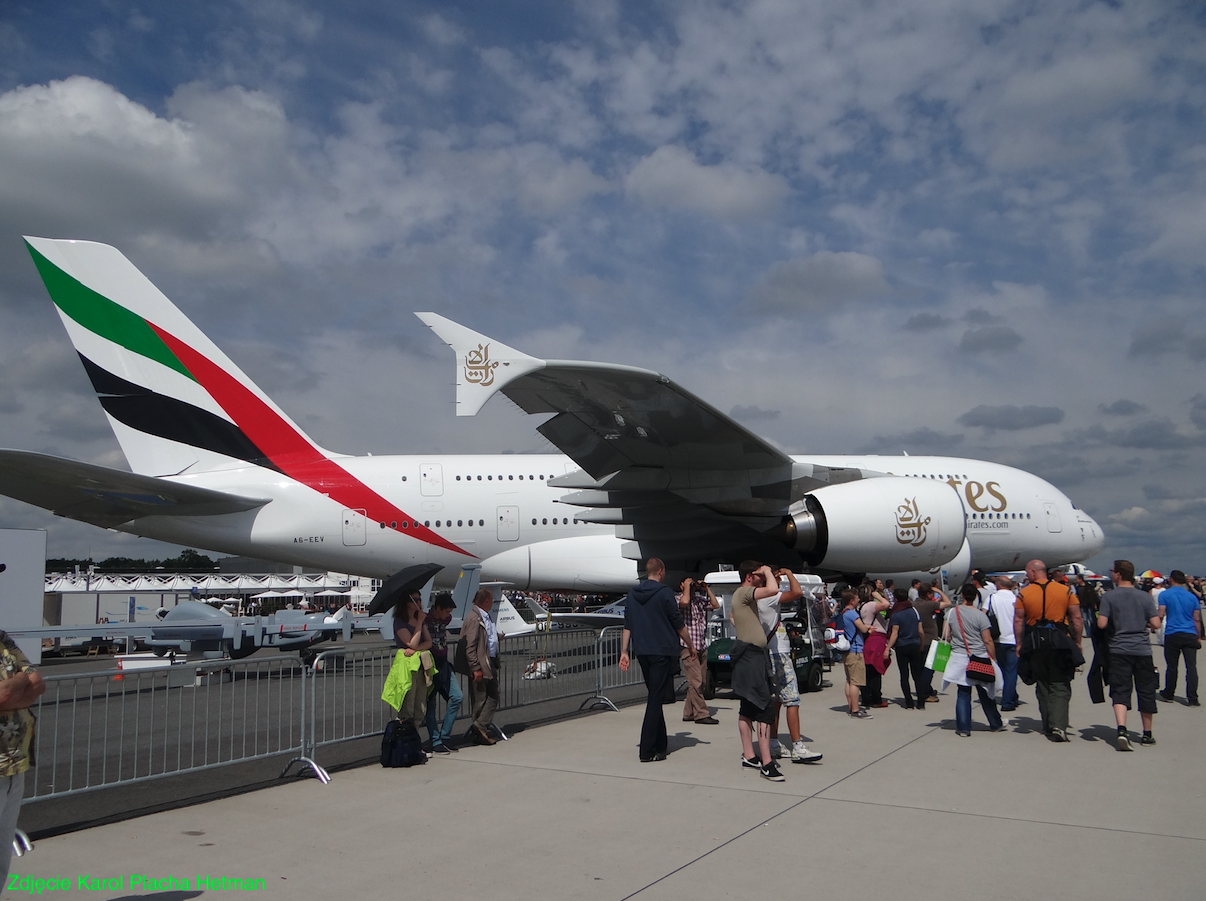Warszawa 2023-03-08
Airbus A.380.
The Airbus A380 is the world’s largest long-haul airliner. The aircraft was the result of international cooperation, mainly France, England, Spain and West Germany. The manufacturer of the Airbus A.380 aircraft was the Airbus consortium. The first flight was made on April 27, 2005. The aircraft were produced in the period 2007 – 2021. 251 examples were built.
The aircraft was designed under the designation Airbus A.3XX, from 1994. The aircraft is three-deck; luggage deck, above the passenger deck and pilots’ cockpit, third passenger deck. The aircraft is wide fuselage, with an elliptical cross-section, most favorable for a pressurized cabin. Both passenger decks run the entire length of the hull. The aircraft is more capacious than its competitor Boeing B-747-8 by as much as 32%.
On December 19, 2000, construction work began and the aircraft was designated A.380. In the designation, the number "8" is intended to suggest a double-decker aircraft. This name was a break with the tradition of assigning consecutive numbers to subsequent aircraft. Airbus has secured an order for 55 units from six customers. None of the customers ordered a single-class aircraft. On January 23, 2002, assembly of the first aircraft began. The first A.380 aircraft, serial number 001, registration F-WWOW, was presented in Toulouse on January 18, 2005. The first flight was made on April 27, 2005.
Five A.380s were built for testing and promotion. Test flights have begun, including a four-flight crossing of the Atlantic. In March 2006, the aircraft underwent further stationary tests. Among other things, evacuating 853 passengers in less than 90 seconds. The test was passed by EASA and FAA. The problem is that the test selected fit schoolchildren and students, not typical passengers with an average age of 40. The company explained that only half of the emergency exits were used for evacuation. On September 4, 2006, the first flight was made with a full set of passengers. They were employees of the Airbus consortium.
Due to the different versions of the CAD CATIA computer program that were used at the two Airbus sites (CATIA 4 in Hamburg, CATIA 5 in Toulouse), problems arose with the aircraft’s wiring, leading to production delays.
The first A.380 was delivered on October 15, 2007 to Singapore Airlines. Each carrier ordered planes in a different configuration, three or four-class, with different equipment, with different "room-s" in the top classes, not to mention the colors used. The number of kitchens, toilets and bathrooms varied. Airlines have invested large funds in advertising campaigns.
According to paper data, the A.380 aircraft is the most economical per passenger. The problem was that it was difficult to fill entire decks with passengers. Therefore, in terms of economy, the twin-engine Boeing B.777 is ranked first in the world.
The "China virus" pandemic has led to problems for airlines to maintain the profitability of the aircraft. Several carriers decided to withdraw from further purchases of A.380 aircraft, deciding to purchase A.350 aircraft. Many A.380 aircraft were positioned on slopes and protected from the weather. Currently (2023), the preserved aircraft are gradually returning to service.
The construction of the A.380 aircraft.
The aircraft was made in a classic layout. Four turbofan engines were used for propulsion, placed under the wings. The main landing gear is multi-leg; four legs, 20 wheels in total. Single leg front landing gear with two wheels. The airframe was made of duralumin and plastics. The plane is flown by two pilots.
Driven by four Rolls-Royce Trent 900 turbofan engines, 4 x 356 kN or Engine Alliance GP7000.
Airbus A.380 T-T data:
Span 79.80 m. Length 73.00 m. Height 24.10 m. Bearing area 845 square meters. Curb weight 276,000 kg. Take-off weight 575,000 kg. Fuel capacity 259,200 kg (320,000 litres). Maximum number of passengers 853 with single-class arrangement. Approximately 560 passengers in a three-class layout. Maximum speed 0.89 Ma. Cruising speed 0.85 Ma. Operating ceiling up to 13,144 m. Range 15,200 kg.
Written by Karol Placha Hetman





